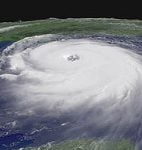Just 10 days after tropical cyclone Nargis devastated the Irrawaddy delta region of Myanmar (Burma) — claiming a roughly estimated 100,000 lives — western China was struck today by a strong earthquake centred in a mountainous region of Sichuan province. The quake, with a magnitude of 7.8, was felt throughout China and in neighbouring countries, including Vietnam and Thailand.
Prime minister Wen Jiabao, who arrived in the area on Monday night, termed the situation a “severe disaster” in a country that is prone to seismic activity, and called for “calm, confidence, courage and efficient organisation”. China’s president, Hu Jintao, ordered an “all out” aid effort and soldiers were dispatched to the earthquake zone. No damage has been reported at the massive Three Gorges Dam, several hundred kilometres east of the earthquake’s epicenter.
Updated reports on the deaths – already in their thousands — and the damage in China are emerging hourly, in contrast to the situation in Myanmar. The military government in Yangon (Rangoon), which has refused visas to international aid workers since the cyclone hit, has now agreed to accept international assistance. It insists, however, on delivering the relief supplies itself to the flooded Irrawaddy region.
As China and Myanmar confront the effects of natural disasters, chinadialogue republishes C Paskal’s January 2008 look at how countries can create better defences against environmental change.
—-
Environmental change is a sustained and pervasive attack on the status quo. Nothing can be taken for granted, and that includes global transportation, international law, borders, agriculture, infrastructure, access to resources, military power and economic stability.
As it stands, no country is prepared. However, it does not have to be that way. The human, economic, political, and security cost of environmental change can be mitigated at three stages. These, the three R’s, are:
• Reinforcing mitigation and adaptation before the event through good planning, communication and regulations;
• Executing an effective rescue during the crisis;
• Supporting a long-term regional recovery to lessen the disruptive social and economic impacts.
Each of these three categories operates at two levels: government and society (including business). These make six areas that can be worked on to create better defences against environmental change – or, looked at another way, six areas of vulnerability. A breakdown of these six elements gives an idea of how ready a place is to survive a blow. Here is a small sample of things to aim for:
|
Reinforce |
Rescue |
Recovery |
|
|
Government |
– Climate proofing infrastructure – Adequate training and equipping of emergency services – Disaster plans in place and regularly updated |
– Clear, viable command and control structure – Good communications between rescuers and those affected – Operationally flexible and easily implementable plans and measures. |
– Social services call-up to mitigate trauma of resettlement – Economic incentives to help rebuild economies in environmentally stable areas – Clear communication about progress of recovery |
|
Society |
– Public awareness of disaster plan and citizen participation – Large, aware social networks – Adequate inter-citizen communications |
– Strong social cohesion in crises situations – Adaptability to swift changes in conditions and needs – Ability to not rely exclusively on government or other external assistance |
– Extensive non-governmental support networks to help rebuild socially and economically – Corporate response that focuses on long-term stable growth rather than short-term profit
|
By looking at this graph of vulnerabilities, it becomes clear that some of the richest countries are also among the most wanting of counter-measures. In the US, Hurricane Katrina exposed failures on all six fronts. This wasn’t necessary. It’s worth comparing the adaptive capacity of New Orleans to what’s happened in similar situations in other locations.
Around the same time that Katrina hit New Orleans, Mumbai received the most rain ever in a single day and flooded. Mumbai officials were largely unprepared, but locals stepped up to the plate, providing shelter and food for the stranded, actively policing their own neigbourhoods, spreading information about evacuation routes and even arranging drinking water for those trekking scores of kilometres out of the city. Around 1,000 people died during the Mumbai flood, and there was an estimated US$1 billion in damages, but crime dropped dramatically and the society did not fragment. Mumbai failed on reinforcing (government), rescue (government) and recovery (government), but the strength of local social networks helped with rescuing (social) and recovery (social).
It is also telling what happened to coastal southeast China in the summer of 2006. By August 11, it had been hit by eight typhoons, including the most powerful one in half-a-century. Over 1,700 people died in total, more than 5 million homes and 323,750 square kilometres of farmland were destroyed, and there was at least US$20 billion in damages. At the height of the biggest typhoon, the government used all means possible, including TV, the internet and text messages to get the word out about escape routes. In all, more than 1.5 million people were evacuated, 40,000 ships were recalled to ports and all business “not related to fighting the typhoon” was suspended. Society did not break down and all levels of government, including the military, came together to effectively limit additional cost and suffering. Here, China failed in reinforcing (government), in part through replicating the US in allowing development in flood prone-areas, but it came through in rescue (government).
It is worth noting, however, that countries with a strong government response need to be careful to include the population in the resilience, rescue and recovery process, otherwise it will end up with a population that is incapable of self-reliance. What is needed is to suffuse information and adequate response patterns throughout populations, so that the capping and rolling back of environmental change vulnerabilities becomes both politically and organisationally feasible. Adaptation can only come about if entire populations get involved, and not just governments and corporates. Involvement of the latter two is necessary but not sufficient for success.
There exists a wide band of adaptive capabilities, and some of the richest countries can learn from a few of the poorest. For example, rescue (social) in Mumbai was comparatively successful. Law and order remained stable, and the citizenry neither resorted to an unusual display of aggression, nor were subjected to unusual force by a panicked administration, as happened in New Orleans. One explanation could be the “inoculation” of the population with what may be termed “climatic behavioural antibodies” to weather disasters because of the frequent flooding that affects India’s leading metropolis. Constant adjustment has led to a tolerance for sudden extremes in weather, combined with self-reliant resilience in facing them, mainly because of the sclerotic response of civic authorities in the past.
Just as there are “terror drills”, “weather drills” may be one way of creating similar antibodies that can check the dissolution of civil structures as took place after Katrina. At the government level as well, climate crises must be mainstreamed into disaster management planning. For example, while emergency call centres may now be terror-proofed, they must also be climate-proofed. The ones in New Orleans flooded almost immediately, compounding the problems with the rescue effort.
There are also varied measures that can be taken during the recovery phase to help long-term stability. For example, there must be an appreciation that such traumatic events can result in normally law-abiding citizens cracking under the strain and resorting to anti-social behaviour, in effect suffering what we term a “transient criminal episode”. It is important that these first offenders be sent to dedicated facilities that isolate them from the corrupting influence of the main prison system, and then be reintegrated into society as soon as feasible. If this is not done, it can create whole new long-term clusters of criminal behaviour.
In the same way that looming problems in the energy sector are forcing innovation, there now needs to be a complete tip-to-tail rethink about the response to the looming security problems of environmental change. All countries, even – and sometimes especially — the strongest, are at risk. But all countries also have the potential to defend themselves better than they are doing at present. And in a world of environmental change, limiting loss will be just as important as promoting growth.
C Paskal is an associate fellow at the Royal Institute of International Affairs (Chatham House) in London and visiting faculty in the Department of Geopolitics, Manipal University, India.
Homepage photo by Mohd Nor Azmil Abdul Rahman via Flickr




